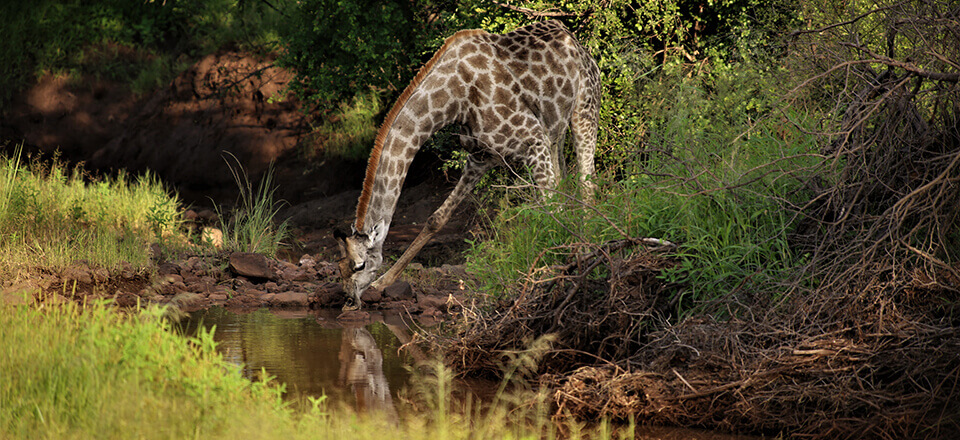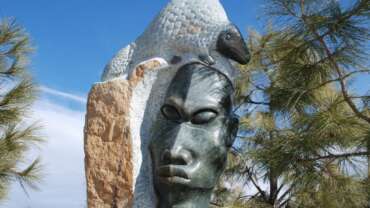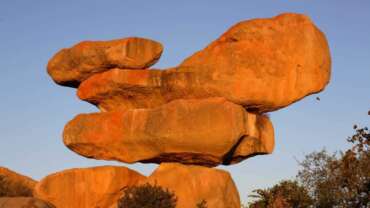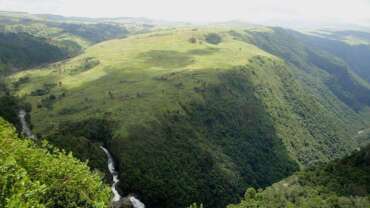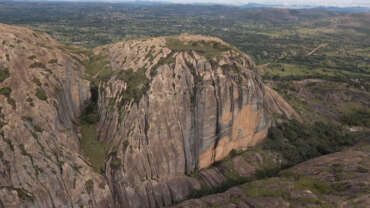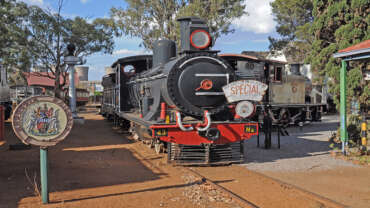Wildlife National Parks in Zimbabwe
The small (but very scenic) Zambezi National Park is a great destination for a day trip from Victoria Falls since it is located next to it. There are also several lodges overlooking the Zambezi River inside the park offering a real bush experience. Elephant and buffalo are regularly seen, as well as giraffe and zebra.There is a good variety of antelope including water buck, impala and sable.
The park has the very scenic Zambezi River as its northern border. The Zambezi River Game Drive runs the length of the park, along the river for about 50km. The vegetation is mainly mopane woodland and riverine forest with some amazing trees, including apple-ring, figs and ebony.
The park shouldn’t be compared to some of the more impressive wildlife destinations in the country. Four of the Big Five are present, but only elephant and buffalo are likely to be seen. Rhino is absent. Leopard are rarely spotted, while sightings of lion are becoming more common. African wild dog also occur in the park, and the best chance to spot them is during the denning season, from May to August. The river teems with crocodile and hippo.
The broad Zambezi River draws thirsty animals in the Dry season (April to October). It’s a spectacle that in turn draws plenty of visitors – particularly on weekends. If you need more reasons to visit at this time, consider that this is also when Victoria Falls is at its most thunderous, thanks to the Zambezi’s peak water flows. This stacks up well against the low-season prices available during the wetter months.
The Dry season (April to October) is characterized by temperatures that bounce from morning cold to afternoon warmth and back again. That is, until the season’s final month, when personal discomfort can rise along with the mercury in anticipation of the coming rain. The Wet season (November to March) has a predictable daily pattern of afternoon showers, though these are usually followed by the reappearance of the sun.
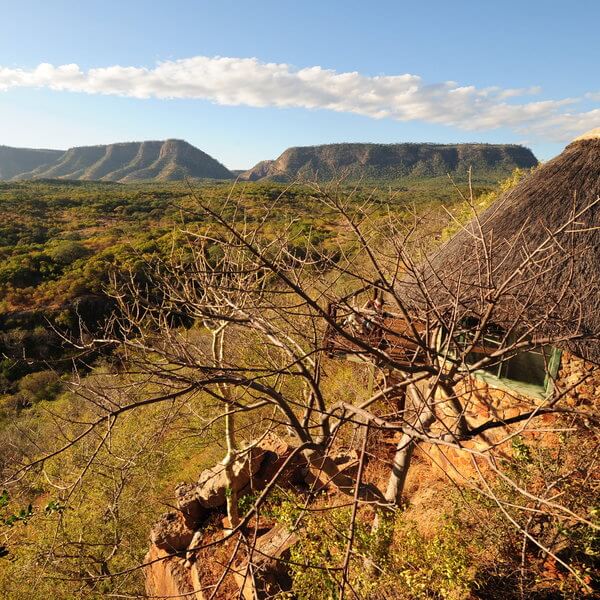
Chizarira National Park
Chizarira National Park has four of the Big Five animals with the rhinos missing . The terrain is excellent for leopard, and there is a good variety of herbivore. Its main attraction is its enormous wilderness appeal. Walking safaris are a big part of the experience.
Elephant and buffalo are regularly seen. There are good populations of antelope including klipspringer, impala and greater kudu. Roan and tsessebe, rarely seen in other parks, are also present. Lion, leopard and spotted hyena are the main predators and Nile crocodile can be found lying on the shoreline.
Best time to visit the park is from the middle (July) to the end of the Dry season (April to October) it is the best time to spot animals at Chizariria’s waterholes and rivers. Sunny, clear skies and an absence of mosquitoes are other advantages of visiting at this time of year.
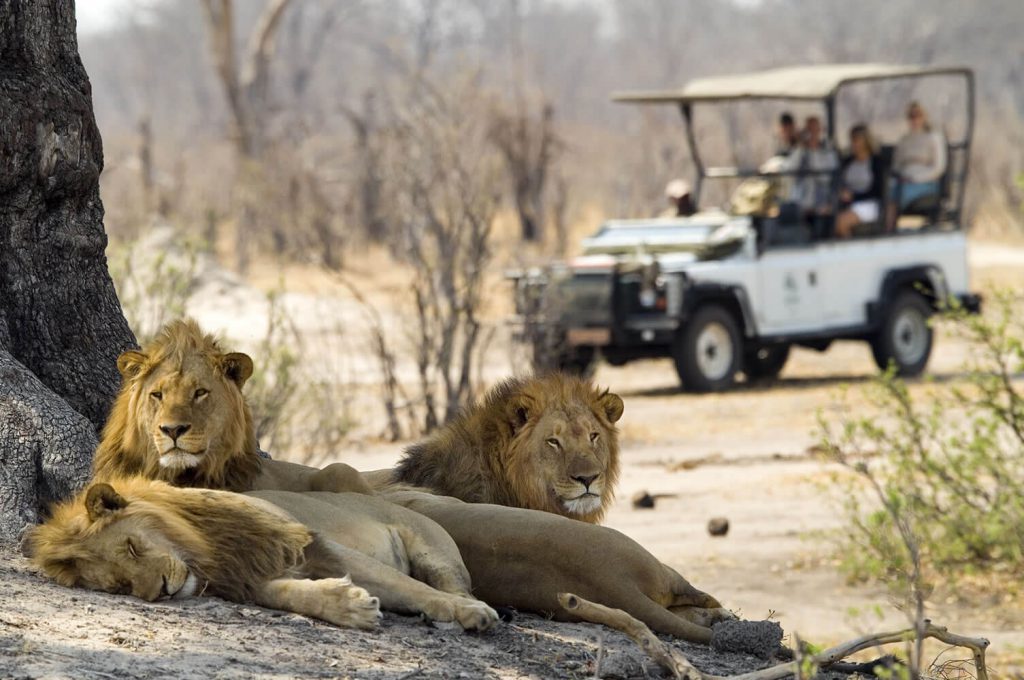
Hwange National Park
Hwange National Park is the largest and most popular park in Zimbabwe. It offers excellent wildlife viewing, and most big safari animals can be seen, including the Big Five. Hwange is most known for the impressive concentration of elephant that are attracted to the park’s waterholes during the Dry season.With over 100 species present, Hwange has the widest variety of mammals of any national park in the world.
Its claim to fame is one of the largest elephant populations in the world. There are 20,000 to 70,000 individuals that congregate around the waterholes toward the end of the Dry season. Predators, including all three of the big cats, are regularly spotted. The park has an impressive variety of antelope, including some of the unusual species such as sable antelope and greater kudu. The park is an important breeding ground for wild dog.
The park is situated on the eastern edge of the vast Kalahari sands and scrublands. Habitats in the park include teak forest, thornveld and mopane woodland, with scattered hills in the northwest. You pretty much have Hwange to yourself in the Wet season (November to April). But the scattered animals and lack of accommodation don’t make this the most appealing time to visit – not unless you’re a keen birder. Otherwise, forsake the persistent drizzle and oppressive heat and travel to Hwange in the drier months, when animals crowd the waterholes.
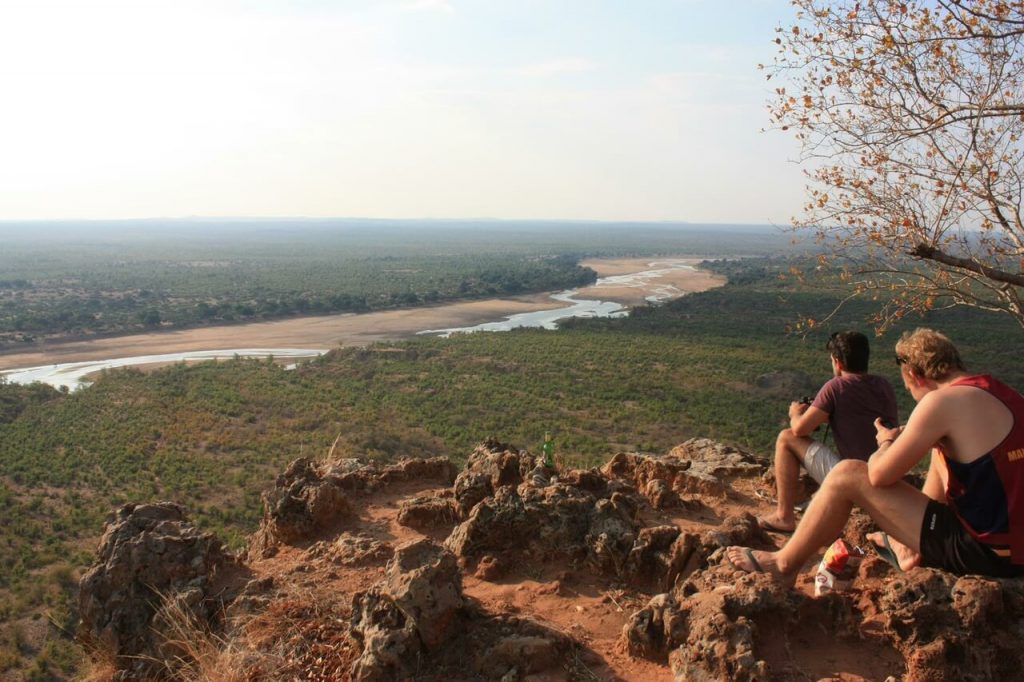
Gonarezhou National Park
Gonarezhou National Park is situated in the south eastern lowveld of Zimbabwe and covers an area in excess of 5 000 square kilometres. “Gonarezhou” meaning “Place of many Elephants” is an extremely scenic Park full of rugged and beautiful landscapes.Alternative folklore suggests the are was named for the herbalists who would stock their medicines in tusks (known as gona in the Shona language).
Gonarezhou National Park is Zimbabwe’s’ 2nd largest national park rivalling Hwange National Park. The park covers over 5000 square kilometres and borders South Africa’s’ Kruger National Park and the Limpopo National Park of Mozambique, the three parks make up an area that is known as ‘The Great Limpopo Transfrontier Park’ which is in total 35 000 square kilometres of untamed wilderness. The Save, Runde and Mwenezi rivers flow through the park attracting the numerous species of wildlife especially birdlife, the river teeming with numerous species of fish.
Guest activities on offer at Gonarezhou National Park are walking and fishing safaris and there is accommodation available on site in the form of bush camping.Three major rivers – The Save, Runde and Mwenezi – cut their courses through the Park, forming pools and natural oases from which hundreds of species of birds, wildlife and fish gather to feed and drink. As its name implies, Gonarezhou is famous for its elephants, and many of the largest-tusked elephants in the region maybe found within the Park.
Chimanimani Mountains National park
Chimanimani Mountains National park is a mountainous area in the province of Manicaland, eastern Zimbabwe.The region is distinguished by large peaks, carved from a rifted quartzite block, the highest reaching to 2,440 m (8,005 ft) and stretching for some 50 km (31 mi), forming the border with Mozambique.Between the village of Chimanimani and the border the ranges are gentler and more rounded. The national park is in the southernmost area of the Eastern Highlands, and is 150 km (93 mi) from the town Mutare.
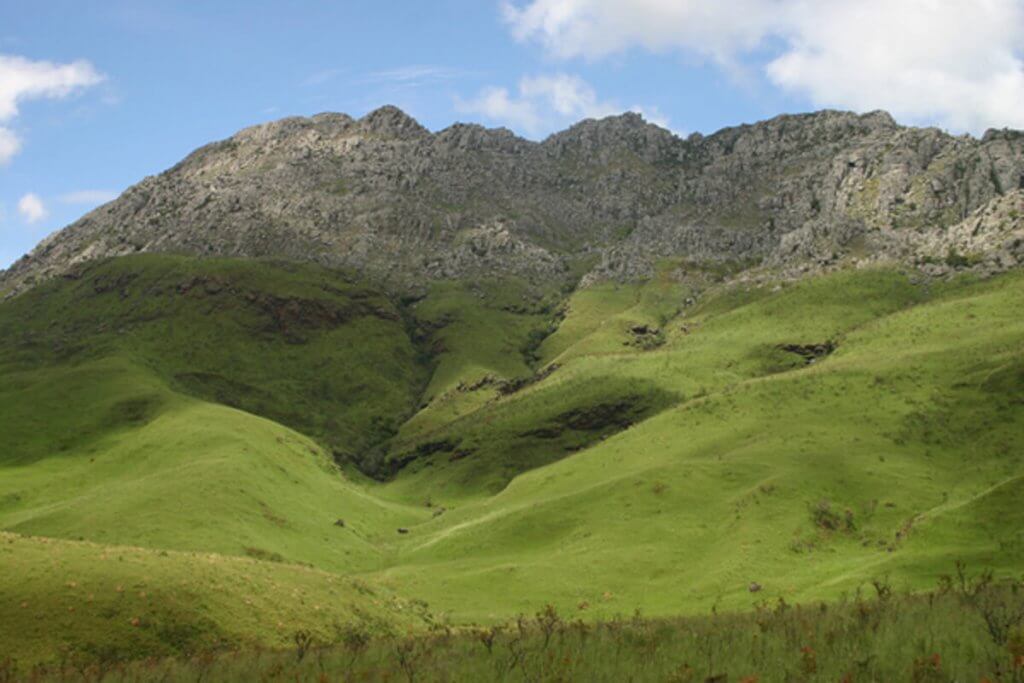
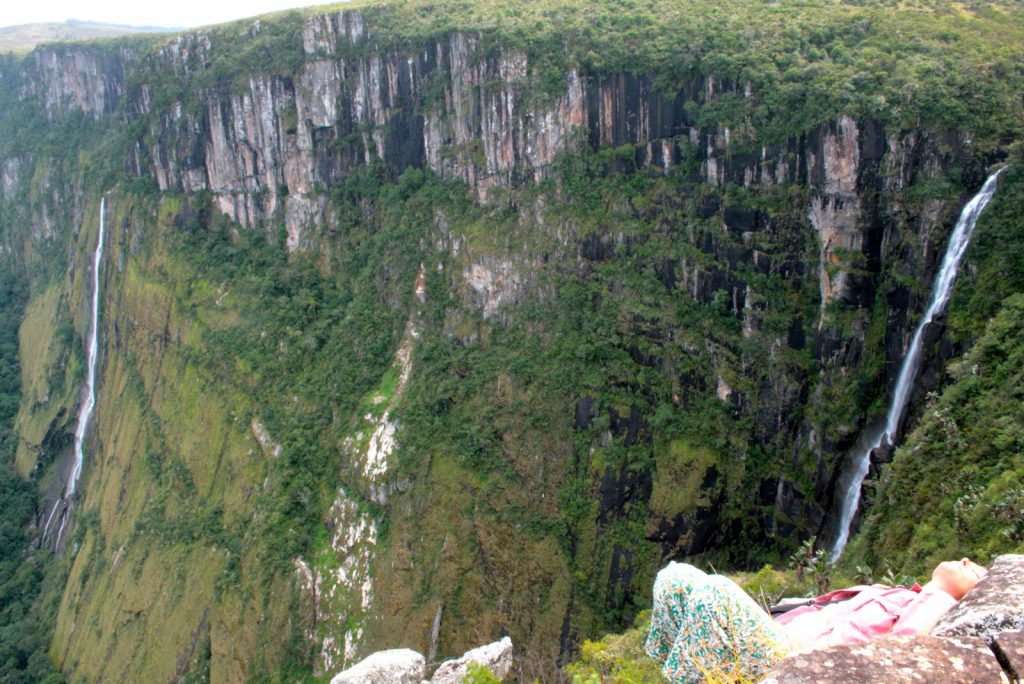
Nyanga National Park
One Park, with A Range of Attractions. By far, this park has an impressive collection of break-taking attractions. It’s the one park with a good dose of everything, mountainous terrains to inspire the hiker, wildlife for all enthusiasts, stunning waterfalls for our appreciation and the relaxing environment for the right holiday experience.
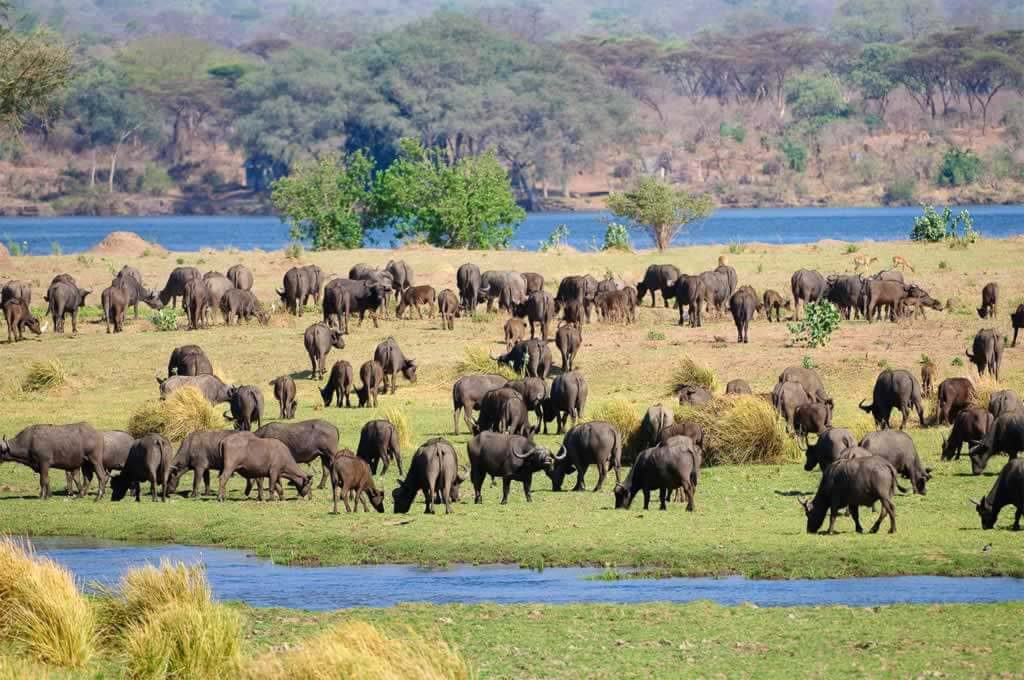
Manapools National Park
Manapools National Park is a WORLD HERITAGE SITE based on its pure wilderness and beauty, It is home to a wide range of mammals, over 350 bird species and aquatic wildlife.
Manapools National Park is rated the 5th best park in Africa by Gateway magazine. It is a
-Renowned World Heritage Site for its pure wilderness and beauty-(still has dinosaur spoors)
-TFCA- Transfrontier Conservation Area
-Ramsar Site
-IBA – Important Bird Area.
-MIKE Site-Monitoring of Illegal killing of elephants.
-Bio-Sphere reserve- One of the world’s wildest and preserved natural ecological areas
During the rains, most of the big game animals move away from the river and into the escarpment. They start returning to the riverine areas from around April, as the pans in the bush dry up. As the year progresses, increasingly large herds of elephants and buffalos are seen, as well as kudu, eland, waterbuck, zebra, impala and many other antelope.The game is very relaxed about people on foot, making Manapools one of Africa’s best national parks for walking safaris.The best time for wildlife viewing in Mana Pools National Park is during the Dry season, from June to October. Animals are easier to spot because the dry weather thins the bush and wildlife concentrates around the Zambezi River.
The Park is at the Centre of a network of protected areas in Zimbabwe which stretch from Kariba to the Mozambique border. Manapools is located in Mashonaland West Province and falls under the ambit of the Hurungwe Rural District Council for higher level administrative purposes. There are over 20 000 km² of wildlife protected land in the vicinity of Manapools. It is in the Middle Zambezi Valley covering an area of 2196 square kilometers (848 square miles) extending from the Zambezi River in the north to the escarpment in the south. A timeless wilderness considered by many to be the Jewel of Zimbabwe and a Treasure for Africa.
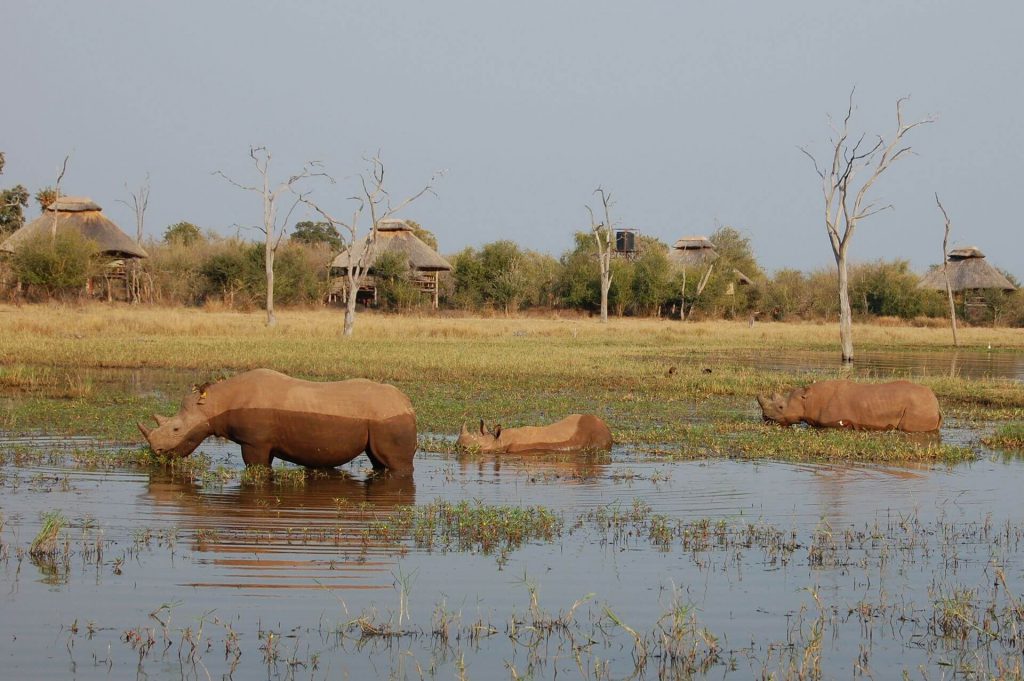
Matusadona National Park
West of Kariba Dam wall is the Matusadona National Park. It has different ecological zone which include the area along the shoreline of Lake Kariba, the Zambezi Valley floor, and the escarpment which is a woodland area. During Operation Noah, much of the rescued wildlife found refuge in this area, and by 1963, Matusadona National Park was declared a game reserve.
The Park comprises some 1 400 square kilometers of diverse flora and fauna. Before the lake was built, Matusadonha was a vast, rugged wilderness with limited access.
The rejuvenative grass found along the shoreline is a great source of food for buffalo, kudu, waterbuck, zebra and impala. The healthy population of these and other game makes it a good home for predators such as lion, cheetah and leopard on the land, and crocodile in the shallows of the lake. Like Matobo Hills, Matusadona is an Intensive Protection Zone, being home to relocated black rhino. The easiest way to access the park is by flying to Kariba town or Bumi Hills, then taking a boat into the reserve.
With the lake came ecological changes. One in particular, the lakeshore contributed greatly to the increase of large mammal populations in the area, especially elephant and buffalo. The grass found on the shoreline is Panicum repens and is a rejuvenative grass – needing only fluctuating lake levels to replenish its nutrients. With this ready food source, buffalo, waterbuck, zebra, and even impala have thrived and with them the predators. Matusadonha is an Intensive Protection Zone (IPZ) and home to several relocated rhinoceros.
The Environs of Matusadona
The southern boundary of the Park is the Omay communal land and the northern boundary is the lakeshore. The eastern side of Sanyati Gorge and the middle of the Ume River provide the east and west boundaries respectively.
Flora and Fauna
Matusadona has three distinct ecological areas. First is the lake and shoreline grassland; second, the Zambezi Valley floor, a mass of thick jesse and mopane woodland, and; third, the Escarpment area of Julbernadia and Brachystegia woodlands.
The Jesse/ Mopani area is sparsely grassed, but provides habitat for browsers, most notably the black rhino. Elephants range throughout the Park, seeking the shade of the Jesse in the heat of the day.
The Escarpment rises some 700 metres above the Valley floor and is extremely rugged. Over the years, elephant and fire depredations have caused the once substantial woodlands to dwindle, and in parts, grasslands have taken over. It became necessary to take control measures to reduce the elephant population to a manageable size. It also became necessary to carry out early burning programmes in the upper escarpment, to prevent later, hot fires from raging through and causing serious damage to tree growth.The effectiveness of the programmes can now be seen by the tremendous regrowth apparent in the Escarpment area.
Animal species that are found in abundance include elephant and buffalo. Other common species are those of: night ape, honey badger, civet, small spotted genet, slender mongoose, banded mongoose, spotted hyaena, wild cat, lion, leopard, yellow spotted dassie, black rhinoceros, zebra, warthog, common duiker, grysbok, klipspringer, waterbuck, bushbuck, scrub hare, porcupine, vervet monkey, chacma baboon, side-striped jackal, hippopotamus, roan antelope, kudu and bush squirrel. Some of the more elusive species include: clawless otter, white-tailed mongoose, reedbuck, sable antelope, eland, civet, rusty spotted genet, caracal and bush pig. Animals that are present but only sighted on rare occasions include wild dog, cheetah, roan and pangolin.



